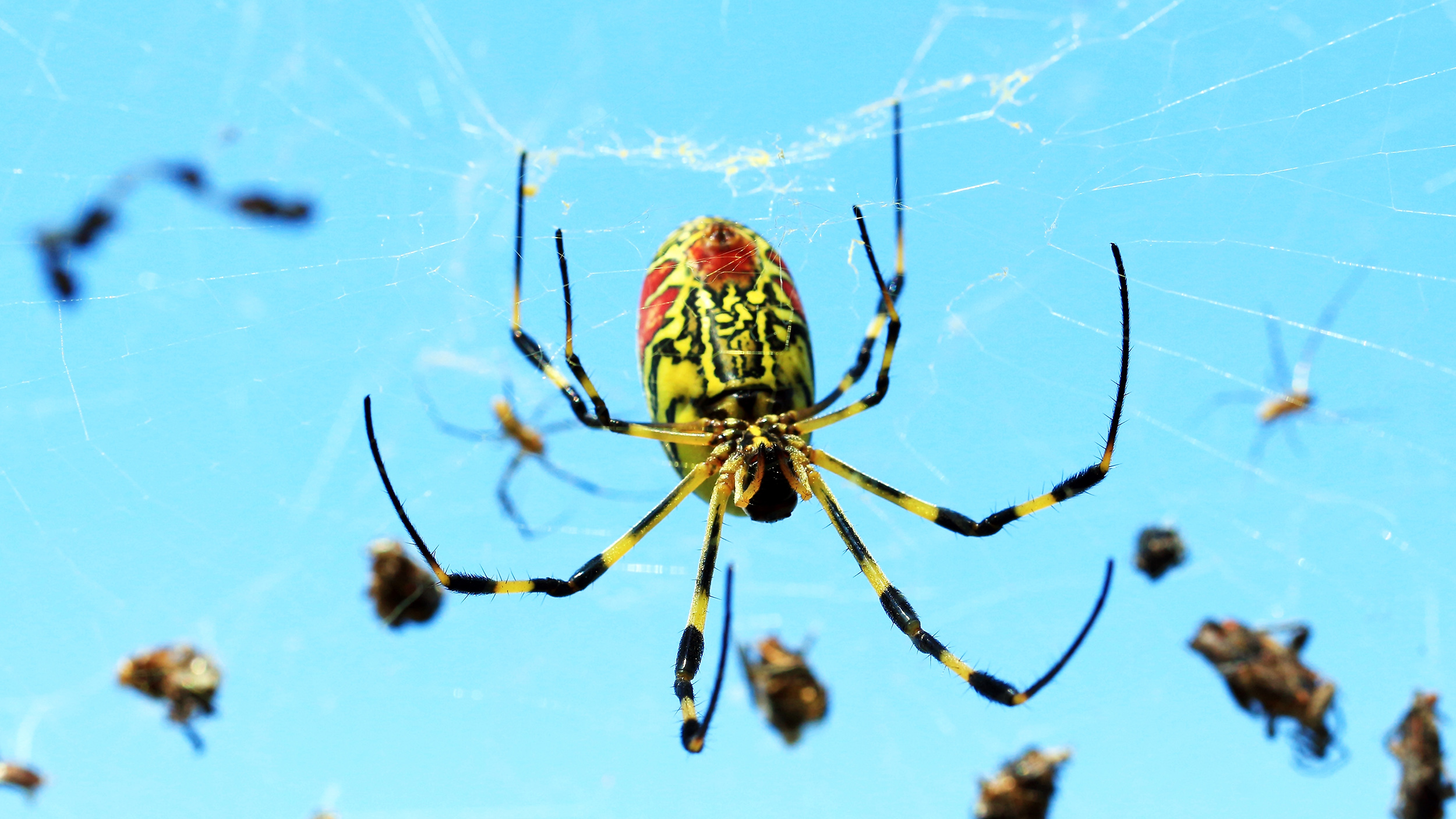Developing an amateur interest in naturalism means becoming intimately familiar with a particular ecosystem and drilling into what makes it tick. Think Aldo Leopold with his careful, obsessively detailed chronicles of his Wisconsin homestead or Henry David Thoreau tracking foxes at Walden Pond.
But what would Leopold have made of, say, a flamingo randomly showing up under his precious pines? How would Henry David Thoreau have reacted to murder hornets arriving in Massachusetts? If either were still around to let us know, it would make for outstanding nature writing.
In the absence of those sages, we’ll soldier on the best we can. As climate change and globalization accelerate, surprising animals are popping up in surprising places more frequently. So what’s been happening in the world of unexpected animals lately?
Let’s take a look.
Bugging out
Insects are particularly good at getting where they shouldn’t be, being small, hardy, and good at both stowing away and escaping. Recall two famous cases from earlier decades. The first is that of the Africanized honey bee — an aggressive hybrid breed that escaped captivity in South America and migrated into Texas and beyond in the 1980s, causing no shortage of panic and pain.
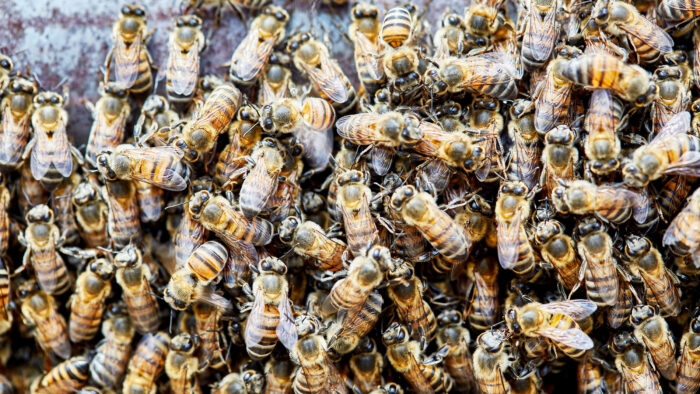
Africanized honeybees. Photo: Shutterstock
The second is Solenopsis invicta, commonly known as the red imported fire ant. This painful pest, also from South America, has stowed away in shipping crates and now makes a home in North America, Australia, and China.
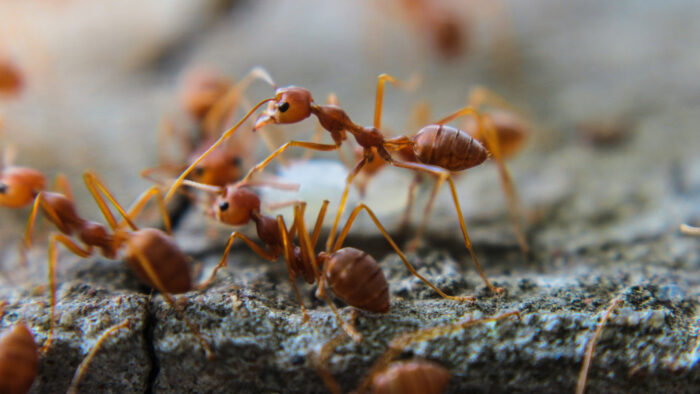
Red imported fire ants. Photo: Shutterstock
Murderer’s row
Then there’s the murderer’s row of non-native moths and beetles currently wreaking havoc on North American trees, from lodgepole pines in the Rockies to hemlocks in the Southern Appalachians. With a lack of natural predators, the besieged trees have to rely on cold winters to kill off the harmful larvae, and cold winters have been in short supply lately.
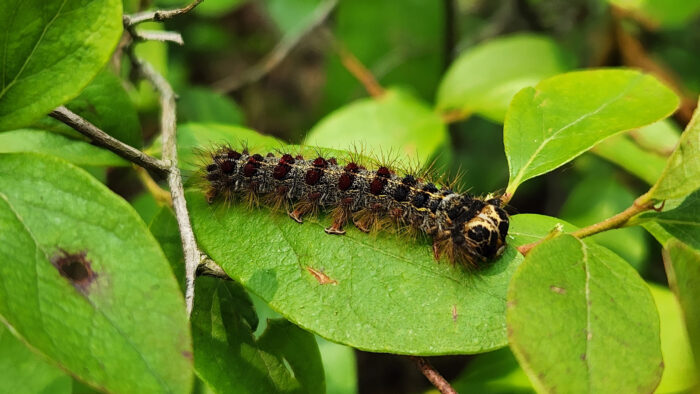
The caterpillar of a spongy moth, one of the invasive species killing hemlock trees in the southern Appalachians. Photo: Shutterstock
And, of course, who can forget murder hornets (Asian giant hornets), arriving as they did in America’s Pacific Northwest at the peak of the COVID-19 pandemic? Though they pack a painful sting, the real danger with murder hornets is that they mostly eat other insects — and they particularly love bees. That’s not good news for imperiled North American honeybee populations, though luckily, the invasive hornets haven’t been spotted since 2022.
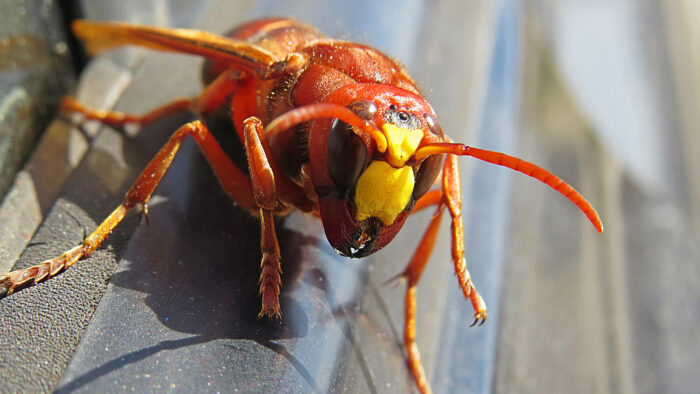
An Asian giant hornet. Photo: Shutterstock
Less immediately alarming is the curious case of the northbound ladybug. A few years ago, Inuit residents of Nain, Labrador, spotted a ladybug — the first any of them had ever seen. How it got there is anyone’s guess. It’s hard enough for human beings to get to Nain. Some years earlier, residents also saw their first moose.
Meanwhile, much further north in the Arctic, the Inuit in Grise Fiord on Ellesmere Island now regularly see killer whales. Orcas have moved north as sea ice has diminished. Their long dorsal fins make sea ice an impediment, and they’ve avoided the High Arctic until recently.

This photo of a ladybug was 100% NOT taken in Labrador. Photo: Shutterstock
(Not so) itsy bitsy spiders
Joro spiders are another example you may have heard of recently, especially if you live in the United States. Because Joros possess a four-inch leg span, boast a bright yellow color scheme, create three-meter-wide webs, and have the ability to parachute around on strands of silk, they are making quite the splash in the American news cycle.
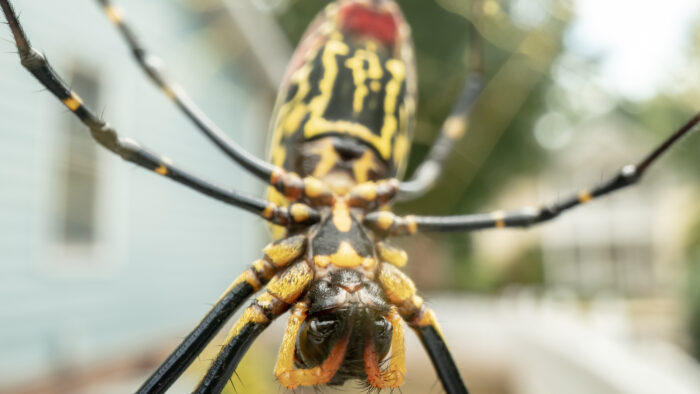
A Joro spider. Scary for roughly six different reasons, but mostly harmless. Photo: Shutterstock
Joros first showed up in Georgia from East Asia in 2014, probably because they — you guessed it —stowed away somewhere. Since then, they’ve quickly spread up and down the Eastern seaboard, largely thanks to that handy silk-based aeronautic ability common with spiders. But not to worry. Unlike Africanized honey bees, Joros aren’t really harmful. Most experts rank their bite as less painful than a bee sting.
The Cape Cod Flamingo
Birds have the distinction of enjoying a dedicated and passionate fan club in a way that beetles and disturbingly large spiders can only dream of. So when they show up in unexpected areas, people tend to notice pretty quickly. That was the case of the Cape Cod flamingo, a pink slice of sunshine that brightened up the rocky New England coast late last month.
The flamingo came to the attention of the Cape Cod chapter of the Audubon Society via — what else — social media. And while flamingos have been spotted in the state before, they were always confirmed to be escapees from zoos or private collections. No one’s sure where this particular specimen is from, but if it is wild, experts agree, it was likely blown northward from its home in Florida by a hurricane late last year and just kept on trucking up the coast.

Here is a flamingo that has wisely not allowed itself to be blown up to Cape Cod. Photo: Shutterstock
It was previously spotted in New York. Less clear is why it’s continuing its current trajectory.
“I have no idea why it’s flying northward,” Mark Faherty, science coordinator for Mass Audubon Cape Cod, told a Boston NBC affiliate.
If it keeps going, it may just join that ladybug up in Labrador.
On the move
Some of these examples are amusing, and most seem to be the result of globalization rather than climate change. However, as a 2024 United Nations Environment Programme report concluded, climate change is a “force multiplier” on other factors. Invasive species that might have once been limited by the natural barriers of a preferred climate have been given free rein by warming air and water, and all they need is us to give them a ride where they want to go.
Less attention-grabbing than nifty spiders or Cape Cod flamingos is the general trend of animal populations shifting in the face of climate change. According to some models, roughly half of the world’s species are on the move — mostly northward to escape rising temperatures.
This is a problem because human infrastructure doesn’t necessarily give these animals a clear path northward, nor is there always room for them. Human politics also plays a role. Some species, like elephants, wandering from countries where they are protected to countries where they are commodities, are in for a rough time.
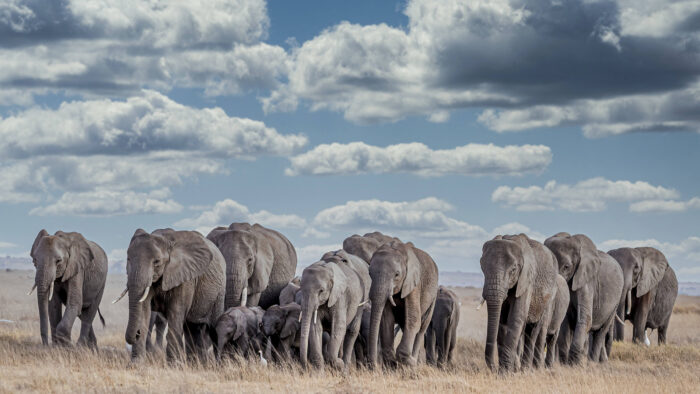
Elephants migrate, but as climate change forces them northward, they might cross into countries where they aren’t protected. Photo: Shutterstock
Dispersal limits
Even more crucial is a concept called “dispersal limits,” a combination of reproductive rates, geographical features, and mobility. Animals with limited dispersal rates are at greater risk for climate change impact, as they can’t move fast enough to outpace it. Our cousins in the primate world are at particular risk.
“When looking at changes in habitat suitability over time, we see habitat shrinkage to the south and habitat suitability expansion to the north, which is to be expected,” Jenny McGuire, an assistant professor at Georgia Tech told journalists from USC Viterbi School of Engineering.
“But importantly…we also see a lot of the habitat suitability gains are lost due to dispersal limits. When dispersal rate is taken into consideration, the future looks bleaker than we would have anticipated.”
